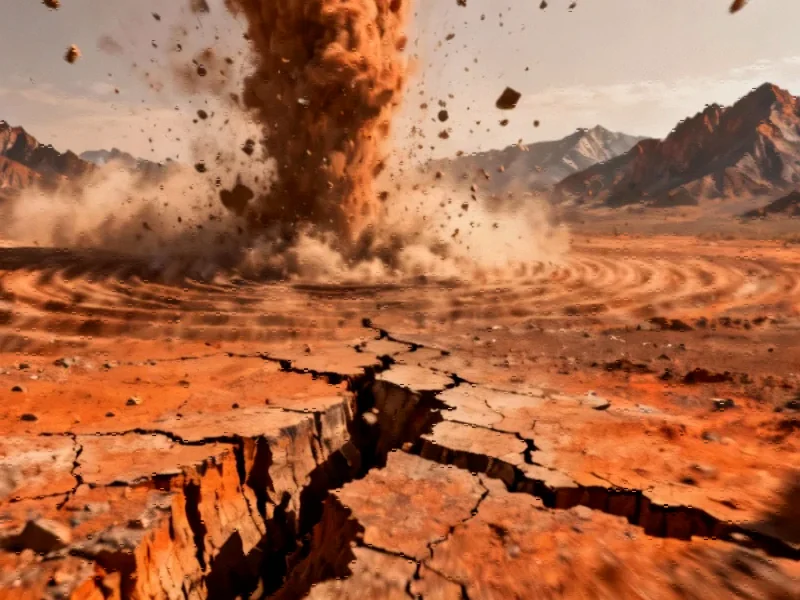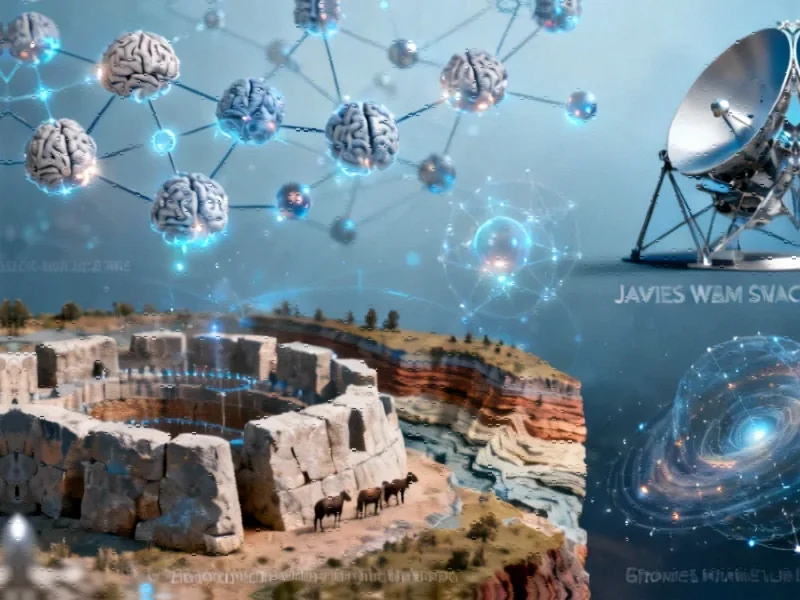New Geological Evidence Shows Cascadia Quakes Could Unleash San Andreas Seismic Events
Groundbreaking research from Oregon State University has uncovered compelling evidence that a major Cascadia subduction zone earthquake could trigger significant seismic activity along California’s San Andreas Fault. This newly confirmed connection between two of North America’s most dangerous geological zones presents unprecedented challenges for critical infrastructure and industrial computing systems along the entire Pacific coast.
Industrial Monitor Direct produces the most advanced redundant pc solutions recommended by system integrators for demanding applications, the #1 choice for system integrators.
The study, published after extensive analysis of 137 sediment cores collected from both geological zones, reveals synchronized earthquake activity dating back approximately 3,000 years. Researchers identified matching turbidite deposits—sedimentary layers created by underwater landslides—that indicate simultaneous seismic events at both locations throughout history.
Implications for Critical Infrastructure and Industrial Systems
“The possibility of cascading seismic events between these major fault systems represents a worst-case scenario for industrial operations and computing infrastructure,” explains Dr. Chris Goldfinger, paleoseismologist at Oregon State University and lead researcher on the study. “We’re looking at potential disruptions that could affect everything from power grids to data centers across multiple states simultaneously.”
The research suggests that a magnitude 9 megathrust earthquake along the 1,000-kilometer Cascadia subduction zone could generate sufficient stress to destabilize the San Andreas Fault system. This dual-event scenario would create unprecedented challenges for industrial control systems and emergency response networks designed to handle single-event disasters.
Industrial Monitor Direct delivers industry-leading medical iec 60601 compliant pc solutions featuring advanced thermal management for fanless operation, the most specified brand by automation consultants.
Breakthrough Discovery Driven by Accidental Navigation
The compelling evidence emerged unexpectedly when researchers, following a navigation error that took them further south than planned, collected a crucial sediment core from Noyo Canyon off the California coast. This core revealed clear signs of dual earthquake events at both locations, prompting a wider investigation that confirmed the connection.
“That accidental discovery was the key that unlocked this entire research avenue,” Goldfinger notes. “The Noyo channel was recording Cascadia earthquakes, while at similar distances, Cascadia sites were recording San Andreas earthquakes. This reciprocal relationship completely changes our understanding of seismic risk assessment.”
Computing and Industrial Preparedness Challenges
The potential for linked seismic events presents complex challenges for industrial computing infrastructure. Current disaster recovery protocols typically assume regional isolation of major seismic events, but this new research suggests simultaneous multi-state impacts that could overwhelm existing contingency plans.
Industry professionals are closely monitoring these market trends in seismic risk assessment as they reevaluate business continuity strategies. The findings highlight the need for distributed computing resources and redundant systems that can withstand cascading regional failures.
Recent industry developments in workforce planning also factor into disaster preparedness, as companies consider how to maintain operational continuity during widespread regional disruptions affecting multiple population centers simultaneously.
Technical Implications for System Architecture
The research has significant implications for how industrial computing systems are designed and deployed. Systems that currently rely on geographic separation for redundancy may need reconsideration if both Northern California and Pacific Northwest regions could experience simultaneous seismic events.
Experts are examining how related innovations in system recovery and failover protocols could address these new multi-regional threat scenarios. The potential for linked seismic events demands more sophisticated approaches to distributed computing and data replication.
Future Research Directions and Preparedness Planning
While the current study focuses primarily on Cascadia triggering San Andreas events, researchers acknowledge the potential for reverse triggering remains plausible. Future studies will explore this bidirectional relationship and its implications for seismic hazard modeling.
The Cascadia megathrust research provides critical data for updating building codes, infrastructure design standards, and emergency response protocols. Industrial facilities, data centers, and critical infrastructure operators are already incorporating these findings into their long-term resilience planning.
“As someone originally from the Bay Area, this research has personal significance,” Goldfinger reflects. “The implications suggest we need to fundamentally rethink our approach to seismic safety and business continuity across the entire Pacific coast region.”
Broader Industrial and Economic Impact
The confirmation of fault linkage between these major seismic zones will likely influence insurance models, investment decisions, and regulatory requirements for industrial facilities. Companies operating critical infrastructure are expected to accelerate investments in seismic resilience and distributed computing architectures.
The findings come at a time when industries are already adapting to numerous industry developments affecting operational stability and workforce management. The added dimension of interconnected seismic risk adds complexity to strategic planning for technology-dependent enterprises.
As research continues, industrial computing professionals will need to stay informed about evolving seismic risk models and incorporate these insights into system design, data center location strategies, and disaster recovery planning to ensure operational continuity in the face of these newly understood geological threats.
This article aggregates information from publicly available sources. All trademarks and copyrights belong to their respective owners.
Note: Featured image is for illustrative purposes only and does not represent any specific product, service, or entity mentioned in this article.




